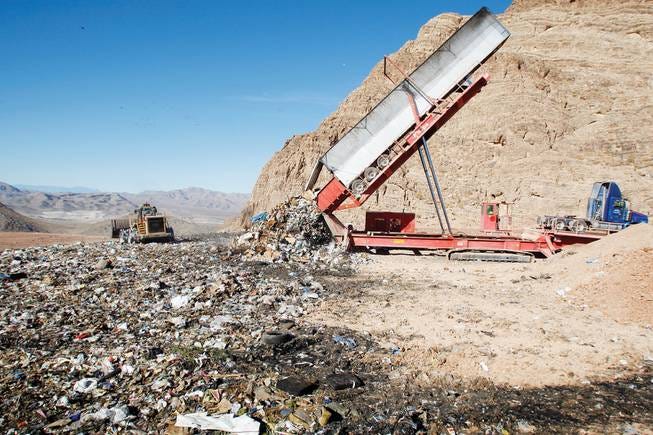From Trash to Riches
As populations and production of goods grow, waste grows, but where does our trash go?
In the U.S., a majority of it is sent to landfills or exported to other countries or other states within America. On average, Americans generate 4.9 lbs. of trash per day. Landfills are filling up quicker so newer ones get created. But trash isn’t just a spatial problem. The organic material in our waste is the third largest contributor to greenhouse gases.
The alternative to burying it is burning it. For a century and a half, we’ve gotten rid of trash by setting it on fire in incinerators. We’ve since come up with ways to create energy from our junk.
Waste to Energy
What exactly is biomass? Biomass is organic material from plants and animals. This is stuff like paper products or food waste in our trash. Rather than let it decompose and release carbon dioxide and methane into the atmosphere, we can turn it into energy. We can burn it to create heat, process it to make fuel, or convert it into electricity to power our planet.
Biomass comes in various forms:
Wood waste
Agricultural waste
Biogenic materials from municipal waste (so excluding plastics, noncombustible materials, etc.)
Animal and human sewage
While not as prevalent as wind or solar power, Biomass accounts for 1.1% of our electricity source.
In this week’s article, we’ll focus on what we do with all the trash we generate.
Burn vs. Bury vs. Gasify
While burning trash prevents it from going straight to a landfill, it’s not without it’s downfalls. Burning trash releases toxins into the air. It also produces ash, which gets buried in a landfill anyway (though the volume is much lower than straight up trash). Another downside is that landfills and incineration plants are often located in rural, less affluent areas, leading to health problems for residents.
Enter gasification. Gasification involves heating the organic material at high temperatures (without burning it) to produce biogas for fuel. Companies get paid to take waste, and they get paid for the renewable energy they generate.
Not all trash is gasified. Companies will sort hazardous material and non organic material before performing energy generating action. They’ll either recycle it or sell them to other manufacturers to create new products. Everything else gets sent to landfill.
While more efficient than burning trash, gasification is an intensive operational and expensive process.
Some Cool Companies in the Biomass Space
Enexor: Quick to deploy on site modular containers designed to convert organic and plastic waste into clean energy through a proprietary thermal process. Enexor hopes to bring this process for small scale residential and commercial use.
Sierra Energy: Sierra Energy is a California based trash gasification company. They are gearing up to launch their first commercial plant in 2025. They hope to use biofuel to supply 100% of the energy needed to run Sierra Railroads.
SteamBioAfrica: This Namibian based company harvests invasive bushes and converts the biomass into clean burning biofuel across southern Africa. Their work allows for the restoration of native lands for future development and agriculture.
To burn..or to reduce, reuse, and recycle?
Unlike natural sources of energy like wind, solar, and hydropower, trash is not a renewable resource. While it’s a great way to manage our trash, it isn’t the best solution for sustainable energy.
All of these solutions address what happens after trash is created… the only question we should ask ourselves is how we can reduce waste in the first place?
Next week, we’ll take a look at what we’re doing to combat the waste in the construction industry.







An energizing read!